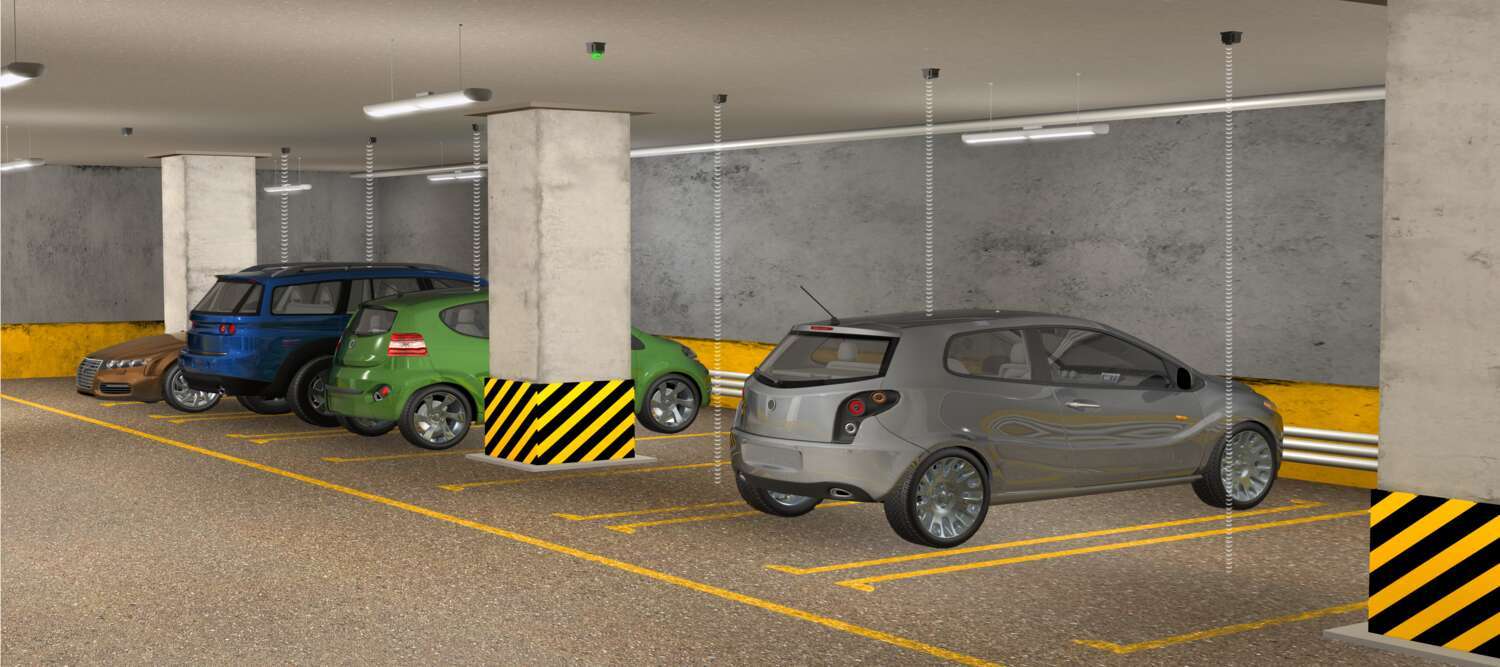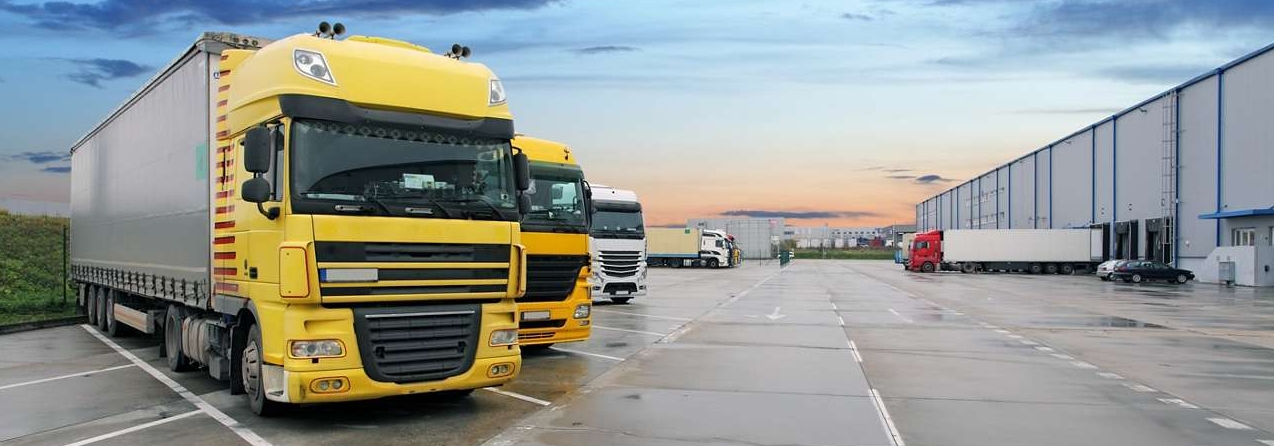Vehicle Detection Sensors
Technologies
The ability to reliably detect vehicles offers significant advantages for asset management, resource allocation, site safety and traffic control.
Identifying the right technology for your vehicle detection application can be challenging, and many factors must be taken into consideration, including task, size of target, sensing range, sensor mounting, and whether the application is primarily indoor or outdoor.
Wireless Magnetometer
A magnetometer works by using a passive sensing technology to detect large ferrous objects (for example, a truck, automobile, or rail car) by measuring the change in the ambient magnetic field. When a vehicle alters that magnetic field, the sensor detects those changes. The range of the magnetometer will depend on the target.
Wireless Ultrasonic Sensor
A wireless ultrasonic sensor is often an ideal solution for indoor or covered parking applications. Using sound waves to detect objects, an ultrasonic sensor can be mounted directly onto the ceiling of a parking garage to identify the presence of a vehicle in the parking space below. The sensor is taught a distinct point within its sensing range (e.g. the ground) and will detect any object regardless of shape, size or reflective angle that crosses between the sensor face and the taught point.




Radar Sensor
Radar sensors are ideal for long-range outdoor applications. Unlike photoelectric or ultrasonic sensors, radar sensors are not affected by conditions such as wind, rain, fog, light, humidity and air temperature. This results in accurate detection in outdoor environments. Many sensors can also be configured to detect objects up to a specified distance, ignoring objects beyond the set point, resulting in higher accuracy. Furthermore, while inductive and capacitive sensors can detect only moving targets, radar sensors can detect vehicles that are both stationary and in motion.
Optical Sensor (Infrared)
Compared to other technologies, optical sensors are not used as frequently for vehicle detection, but they can be a good option for some applications. An opposed mode optical sensor uses the interruption of a light beam between an emitter and a receiver to detect objects. For example, the presence of a vehicle passing between the emitter and the receiver breaks the beam of light. This technology can be used to detect whether a vehicle has completely exited a car wash.
Measuring Light Grid
Measuring light grids are often used for vehicle detection to start and stop a transaction (e.g., paying a toll at a tollbooth). A sender and a receiver are installed on either side of a toll lane, stretching an array of light beams across the lane. When a vehicle enters the detection area, data from each beam can be used to determine vehicle class and the number of axles with a high level of accuracy.
| Technology | Max Sensing Range | Size of Target | Mounting |
|---|---|---|---|
| Technology Wireless Magnetometer | Max Sensing Range Depends on the size of target | Size of Target All sizes | Mounting Can be installed above or below grade |
| Technology Wireless Ultrasonic Sensor | Max Sensing Range 4 meters | Size of Target All sizes | Mounting Must be mounted overhead |
| Technology Radar Sensor | Max Sensing Range 40 meters | Size of Target Large, predictable targets (e.g. trains) | Mounting Minimum of 6 feet from target |
| Technology Optical Sensor (Infrared) | Max Sensing Range 200 meters | Size of Target 5 millimeters or greater | Mounting Requires mounting for both emitter and receiver |
| Technology Measuring Light Grid | Max Sensing Range 2 meters | Size of Target All sizes | Mounting Requires mounting for both emitter and receiver |
-
EZ-Array Series Measuring Light Curtain
EZ-Array Series Measuring Light Curtain
EZ-ARRAY light screens excel at high-speed, precise process monitoring and inspection, profiling, and web-guiding applications with simple installation.
-
K50R Series Radar Sensors
K50R Series Radar Sensors
Banner’s K50R Series radar sensors reliably detect and measure targets in a broad range of applications with both narrow-beam and wide-beam models available.
-
MINI-ARRAY Series Measuring Light Curtain
MINI-ARRAY Series Measuring Light Curtain
A programmable measuring light curtain for inspections and profiling with a long range up to 17m.
-
Q120R Series Narrow Beam Radar Sensor
Q120R Series Narrow Beam Radar Sensor
Radar sensor featuring a narrow beam & high sensitivity for detecting moving or stationary targets, unaffected by ambient weather.
-
Q130R Series Radar Sensor with Graphical User Interface
Q130R Series Radar Sensor with Graphical User Interface
Radar sensor with narrow and wide beam options to detect moving or stationary targets in all weather conditions. Graphical User Interface provides simple setup, greater control, and visibility into sensor settings.
-
Q240R Series Dual Sensing Zone Radar Sensor
Q240R Series Dual Sensing Zone Radar Sensor
Radar sensors reliably detect objects within a narrow beam pattern from up to 100 meters away in all weather conditions. Available in discrete and analog models.
-
Q90R Series High Power Multipurpose Radar Sensors
Q90R Series High Power Multipurpose Radar Sensors
Banner’s Q90R Series radar sensors feature a robust design, versatile performance, an intuitive interface, and enhanced configuration capabilities.
-
QS30 Series High-Performance Long-Range Sensor
QS30 Series High-Performance Long-Range Sensor
High power sensing with ranges up to 200 m, e/m relay output models available.
-
QT50R Series Collision Avoidance Radar Sensor
QT50R Series Collision Avoidance Radar Sensor
High sensitivity radar sensor, ideal for collision avoidance on mobile equipment like reach stackers, forklifts, & mining vehicles. Adj. sensing field.
-
T30R Radar Sensor for Detecting the Widest Range of Objects
T30R Radar Sensor for Detecting the Widest Range of Objects
The T30R sensor is a longer-range alternative to ultrasonic sensors, and provides more reliable detection and position feedback in extreme outdoor conditions and other challenging environments. It features a shorter dead zone, better accuracy, and the ability to see a wider range of targets than traditional 24GHz radar sensors.
-
Wireless M-GAGE Node
Wireless M-GAGE Node
FlexPower Node with internal battery designed for vehicle detection.
-
Wireless Ultrasonic Sensor Node
Wireless Ultrasonic Sensor Node
Wireless FlexPower Node with internal battery designed for object or vehicle detection.


